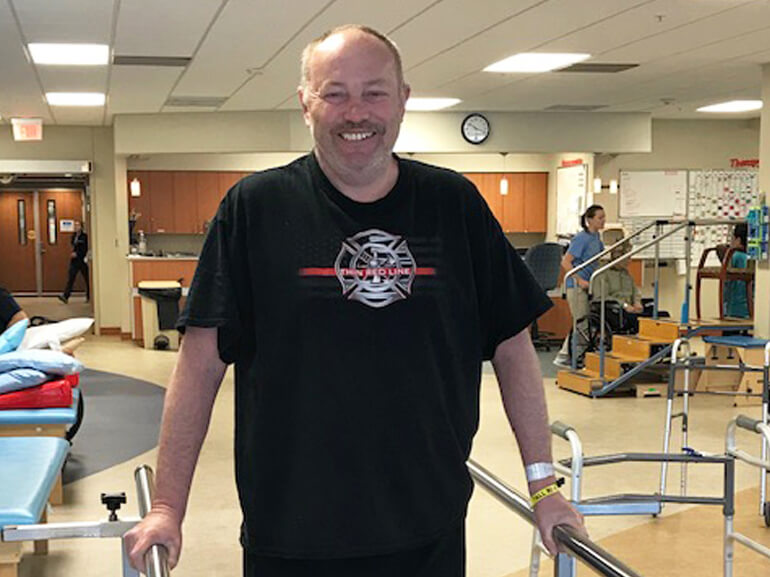Charles Wright’s story

Beach bound
Charles Wright, 54, of Gettysburg, felt sidelined by surgical complications.
Retired from a successful contracting business following a stroke, Charles was leading an active life caring for his three grandchildren with his wife of 35 years, Michelle. A long-time diabetic, he contracted a bone infection. Doctors removed his lower leg. Weeks after the surgery, the wound remained unhealed. Charles tried multiple courses of intravenous antibiotics and a variety of outpatient treatments, but none worked.
A fellow patient recommended Charles travel to the Penn State Health Milton S. Hershey Medical Center to be seen by vascular surgeon Dr. Robert Atnip.
“It’s ok to go out of your community and seek the care you need. The local hospital is right in my backyard. But I felt like every doctor gave up on me. They couldn’t or didn’t want to help me figure this out. When I got to Hershey, Dr. Atnip sat down, talked to me, and I was not a number, but a person. He later came in to visit me after I was released from his care, just to see how I was doing.”
Dr. Atnip’s plan worked. The wound healed, Charles received his prosthesis, continued with therapies and became strong enough for the inpatient rehabilitation program at Penn State Health Rehabilitation Hospital.
During his initial evaluation, our treatment team learned Charles had not tried climbing steps with his new leg. Physical therapists stood guard as he did one, then did four more.
“I was scared but I wanted to try,” he said. “I look at it this way, I’m here to work hard and sleep – everyone can see my progress when I’m done.”
He grinned, ticking off each rehab milestone. His favorite was standing after a year-and-a-half.
“How nice to get a plate out of the top cabinet now. By myself. Standing up in the parallel bars - I cried. I used to get around my home in a scooter and wheelchair, only doing simple transfers within the house. My wife had to set everything out for me before she left for work. She won’t have to do that anymore,” he said.
Charles pauses, thinking of his team of caregivers. “Dr. Atnip, Amanda, Kim, Jason, Mike. You don’t have one person on this staff who is miserable or not willing to help someone. Everyone is pleasant and helpful. Therapy pushes me to what I can take... I like that. ”
Reengaging in his grandchildren’s childhoods kept him motivated.
“I want to throw a football with them, run after them, or play hockey with them. I feel like they were robbed of a year and a half of not having me around,” he said. “They saw me in the parallel bars and it was all for them. I rode in on a scooter, but I am walking out.”
Charles is most looking forward to enjoying the simple things, “… sleeping in my own bed, going into my bathroom and being able to use it normally, walking up my front steps without a crutch, being less dependent on my scooter.”
He hopes his story inspires and encourages other patients as they recover.
“You don’t give up. You keep fighting. Life is short. No matter how hard or how bleak it looks, it can’t get any worse. Listen to your therapists and doctors. Don’t overdo it, but don’t give up. Stay with what works.”
This spring, Charles, Michelle and the grandchildren will move to Cape May, New Jersey. Their house is about five blocks from the beach.
“This move wouldn’t have happened if I hadn’t come to Penn State Health Rehabilitation Hospital,” he said. “More than a thank you is not enough.”